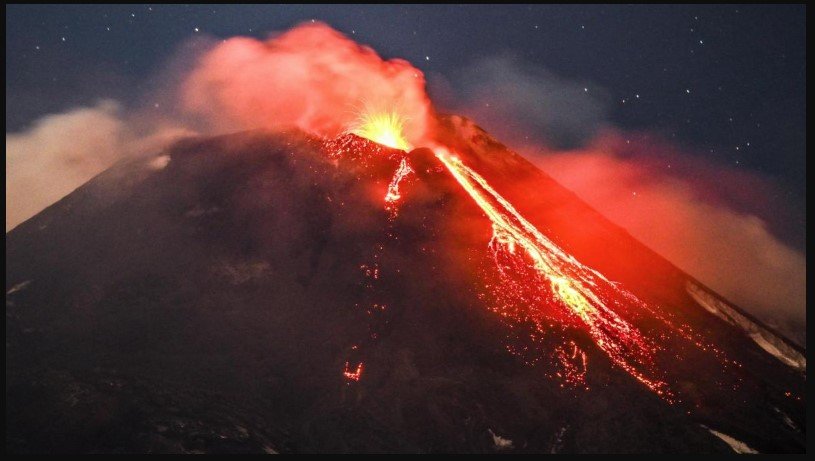Volcanoes have a way of capturing our imagination.
They tower majestically, spewing ash and lava, reminding us of nature’s raw power.
But what lies behind these fiery giants?
That’s where Vulkanologie comes in—a fascinating field dedicated to studying volcanoes and their behavior.
From ancient eruptions that shaped landscapes to modern monitoring techniques that keep communities safe, understanding volcanic activity is crucial for science and society.
Join us as we explore the intricate world of Vulkanologie, uncovering its history, significance, and future potential.
Whether you’re a curious beginner or an aspiring volcanologist, there’s something here for everyone!
What is Vulkanologie?
Vulkanologie, or volcanology, is the scientific study of volcanoes and volcanic phenomena. It delves into everything from the formation of these geological wonders to their explosive eruptions.
At its core, Vulkanologie examines how magma moves beneath the Earth’s surface. Researchers analyze the processes that lead to eruptions and assess potential hazards associated with volcanic activity.
This field combines geology, chemistry, physics, and even meteorology. Volcanologists use satellite imagery and seismic sensors to gather data on active volcanoes worldwide.
Understanding Vulkanologie helps us predict eruptions more accurately. This knowledge can save lives by alerting communities about impending danger.
It’s not just about studying rocks; it’s about understanding Earth’s dynamic systems and our place within them.
The History and Development of Vulkanologie
Vulkanologie, the study of volcanoes, has roots in ancient civilizations. Early societies viewed volcanic eruptions as expressions of divine power or wrath, which shaped their understanding and interactions with these natural phenomena.
In the 18th century, scientific inquiry began to emerge. Pioneers like Benjamin Franklin and Alexander von Humboldt started analyzing volcanic activity through a more empirical lens. Their work laid the foundation for modern volcanology.
Significant advancements in geological sciences occurred in the late 19th and early 20th centuries. Researchers began using new technologies to monitor eruptions and map volcanoes accurately, marking a shift from mythology to science.
Today’s volcanologists utilize sophisticated equipment such as satellite imagery and seismographs. Each advancement brings us closer to predicting eruptions, ultimately saving lives and mitigating destruction caused by these powerful forces of nature.
Studying Volcanoes: Techniques and Technologies
Studying volcanoes involves a blend of traditional methods and cutting-edge technology. Geologists often start with fieldwork, collecting rock samples and observing volcanic formations firsthand. This hands-on approach provides essential data about the volcano’s structure and age.
Remote sensing has revolutionized this field. Satellites equipped with infrared sensors can detect thermal anomalies on volcanic surfaces. These tools help scientists monitor temperature changes that might indicate impending eruptions.
Seismic monitoring is another critical technique. By placing seismographs around a volcano, researchers can track tremors associated with magma movement beneath the surface. These vibrations provide clues to what lies below.
Drones are also becoming indispensable in modern vulcanology. They offer unique aerial views of inaccessible areas, allowing for detailed mapping without putting humans at risk.
Innovative software models also help predict eruptions by simulating various volcanic scenarios based on historical data and real-time observations.
The Importance of Understanding Volcanic Activity
Understanding volcanic activity is crucial for multiple reasons. Volcanoes can be incredibly destructive, unleashing lava flows, ash clouds, and pyroclastic flows threatening lives and infrastructure.
By studying these natural phenomena, scientists can predict eruptions more accurately. This early warning system saves lives and minimizes damage to communities near active volcanoes.
Additionally, monitoring volcanic gases contributes to our knowledge of atmospheric composition. It helps researchers understand climate patterns influenced by volcanic emissions.
Volcanic activity also shapes the Earth’s landscape over time. Understanding this process provides insights into geological history and informs resource management efforts.
In essence, grasping the dynamics of volcanism opens doors to numerous disciplines—from geology and meteorology to disaster preparedness—and enhances our ability to coexist with these powerful forces of nature.
Famous Volcanoes and Their Impact on the World
Mount Vesuvius, infamous for its eruption in 79 AD, buried the Roman cities of Pompeii and Herculaneum. This catastrophic event preserved snapshots of ancient life under layers of ash. Today, these ruins offer invaluable insights into Roman culture.
Krakatoa’s 1883 eruption was one of the loudest sounds ever recorded. It triggered tsunamis that devastated coastal communities around the Sunda Strait and affected global climate patterns for years. The aftermath led to significant advancements in volcanic monitoring.
Then there’s Mount St. Helens in Washington State. Its 1980 eruption reshaped landscapes and demonstrated how quickly nature can reclaim its territory after devastation. The event sparked significant changes in volcano research methodologies.
Each famous volcano tells a story—reflecting humanity’s relationship with nature and highlighting our vulnerabilities when facing natural forces beyond our control.
Real-Life Applications of Vulkanologie
Vulkanologie plays a crucial role in disaster preparedness. Scientists can predict eruptions by studying volcanoes and promptly warning at-risk communities. This proactive approach saves lives.
The field also informs urban planning. Cities near active volcanoes benefit from research that helps design infrastructures resilient to volcanic events. Engineers use this data to create buildings capable of withstanding ashfall and lava flows.
Agriculture is another area where Vulkanologie shines. Volcanic soil is often fertile due to minerals released during eruptions. Understanding these dynamics allows farmers to maximize crop yields while managing risks associated with nearby volcanic activity.
Moreover, geothermal energy harnessed from volcanic regions provides a sustainable power source. As the world shifts towards cleaner energy solutions, Vulkanologie offers insights into viable geothermal sites for future development.
These applications highlight how volcanology is far beyond academic interest; it intersects meaningfully with everyday life.
Future Directions in the Field of Vulkanologie
The future of Vulkanologie is poised for groundbreaking advancements. As technology evolves, scientists are harnessing the power of artificial intelligence to analyze volcanic activity with unprecedented accuracy.
Remote sensing techniques are becoming more sophisticated, allowing researchers to monitor volcanoes afar. Drones with advanced sensors can capture real-time data, providing insights that were once impossible to obtain.
Collaboration across disciplines will also play a crucial role. By integrating geology, geophysics, and environmental science, we can develop comprehensive models that predict eruptions more effectively.
Public outreach and education are also becoming more important. Engaging communities in volcanic risk awareness fosters preparedness and resilience against potential threats.
Funding initiatives for research projects continue to grow. This support is essential for uncovering new methods to mitigate the impact of volcanic eruptions on society and ecosystems.
Conclusion: Why Vulkanologie Matters
Vulkanologie, the study of volcanoes, is more than just a scientific discipline. It plays a crucial role in understanding our planet’s geology and climate. Volcanoes shape landscapes and influence ecosystems, reminding us how powerful nature can be.
The knowledge gained from vulcanology helps mitigate risks associated with volcanic eruptions. By studying the patterns and behaviors of these natural giants, scientists can forecast potential hazards more accurately. This information protects lives and property.
Moreover, understanding volcanic activity contributes to broader environmental studies. Emissions from eruptions can impact global temperatures and air quality, so this field intersects directly with climate science.
Famous volcanoes like Mount Vesuvius or Krakatoa have left lasting marks on human history. Their stories teach us about resilience in the face of disaster while highlighting the delicate balance between humanity and nature.
As technology advances, so does our ability to monitor volcanic activity closely. Remote sensing tools and real-time data collection are revolutionizing how we approach this field—making predictions more precise.
The journey ahead for vulcanology looks promising as new research methods emerge daily. Engaging with local communities also enhances awareness about living near active volcanoes through education on safety measures.
Understanding volcanology enriches our scientific knowledge and deepens our appreciation for Earth’s dynamic systems.
It is a reminder that beneath the surface lies an ever-changing world full of surprises waiting to unfold.


